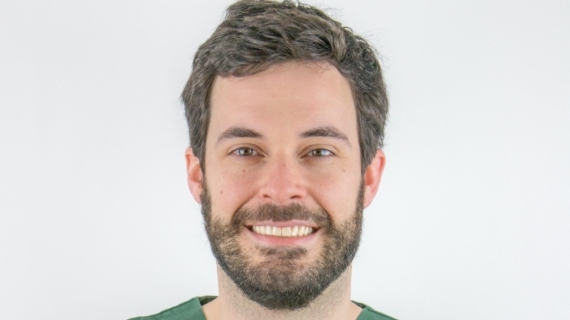Miguel Fraga Silva
Diagnosis in dentistry: non carious tooth surface loss aetiology and clinical interpretation

- Integrated Master Degree in Dentistry, School of Dental Medicine, University of Lisbon
- Master in Oral Rehabilitation, Donau-Universitat Krems, Austria
- Postgraduate in Implant-supported Rehabilitation, School of Dental Medicine, University of Lisbon
- Postgraduate in Oral Rehabilitation & Aesthetics, Gotenburg University, Sweden
- Young Medical Leaders Program, Católica Lisbon School of Business & Economics
- The Geneva Concept Course, University of Geneva, Switzerland
- Founder & Clinical Director of the Dentistry Dep, Santarém Private Hospital/CUF Santarém, 2011-2018
- Postgraduate Professor in Advanced Biomimetic Oral Rehabilitation, CESPU, Portugal
Nationality: Portugal
Scientific areas: Operative dentistry
17 of november, from 14h30 until 15h15
Auditorium B
Conference summary
When talking about preventive medicine or follow-up care, dentistry has quite a unique context.
Few medical specialties have the opportunity of monitoring a patient throughout life, with such periodicity.
The constant evolution of therapeutic solutions in our field is remarkable and evergrowing.
However, we still struggle to truly grasp the preventive potential of our practice.
In this context, non carious tooth surface loss (NCTSL) might be a normal physiological process, but also a pathological one.
Assessing its severity, progression and location is crucial to choose a correct therapeutic management, through the understanding of its aetiology.
During this lecture, we will address the etiopathogenis of NCTSL, specially the synergistic effect of erosion, abrasion and attrition.
We will also speak about intrinsic and extrinsic dental erosion, and the often undervalued role of gastroesophageal reflux disease (GERD).
Ultimately, we will try to demonstrate the relevance of a broader and more holistic approach to diagnosis by reinforcing the notion that a single, individual factor or condition is hardly responsible for NCTSL.
It is the loss of equilibrium between protective features and potentially harmful behaviours or conditions that sometimes eludes us.
We will provide further focus on this topic by addressing the potential correlations between GERD, obstructive sleep apnea, xerostomy, primary and secondary bruxism, stress, anxiety and drugs.